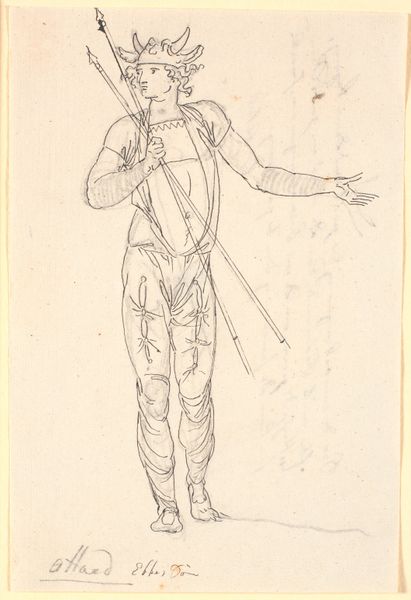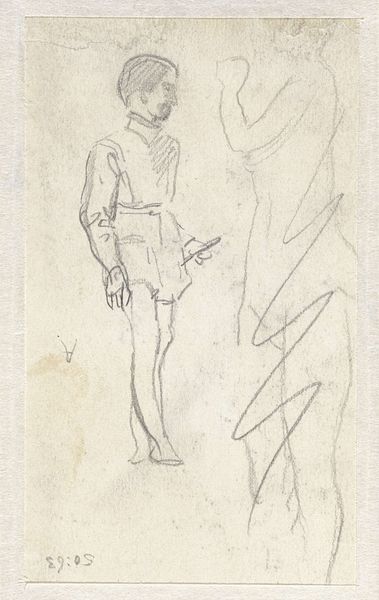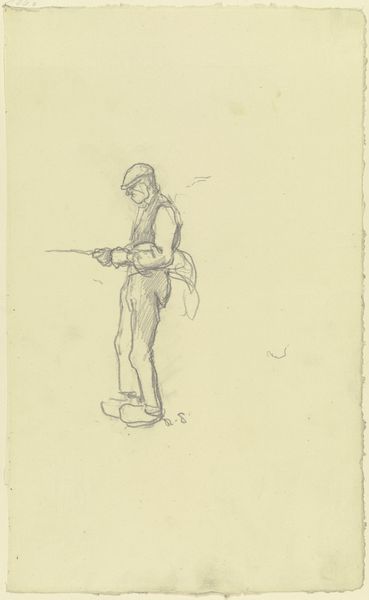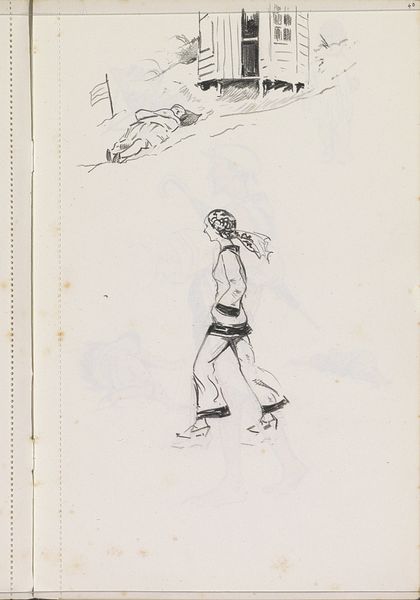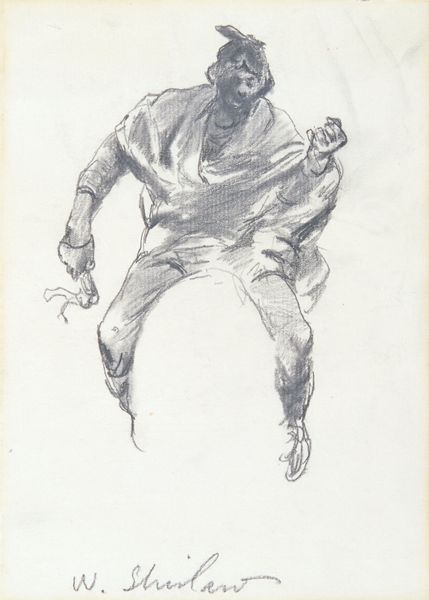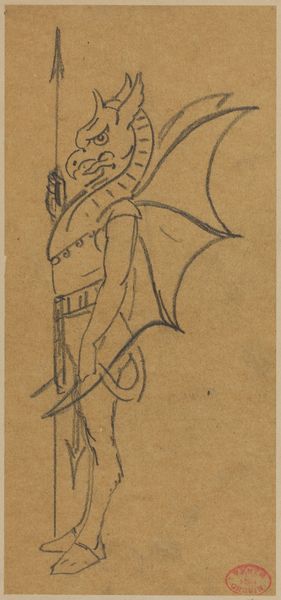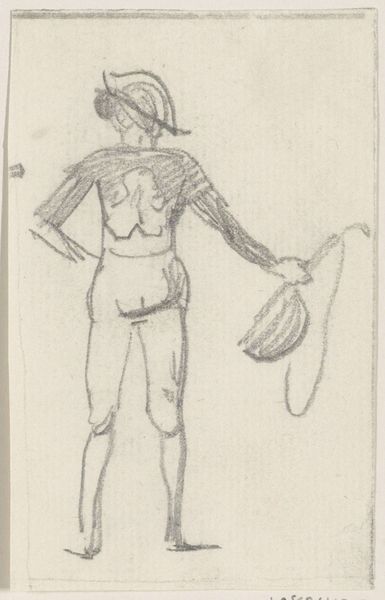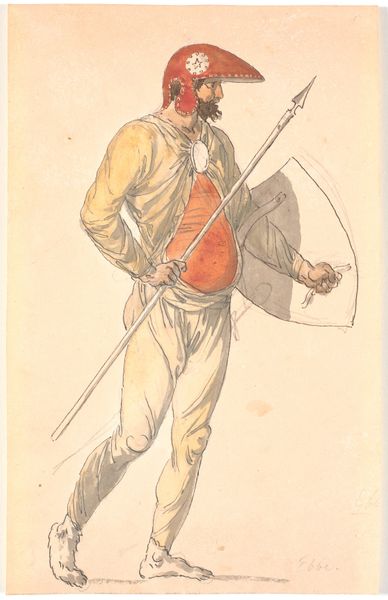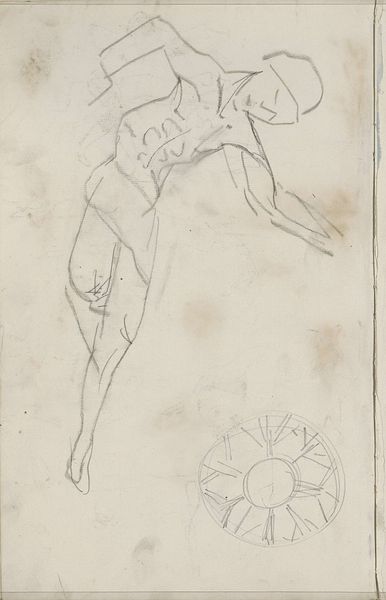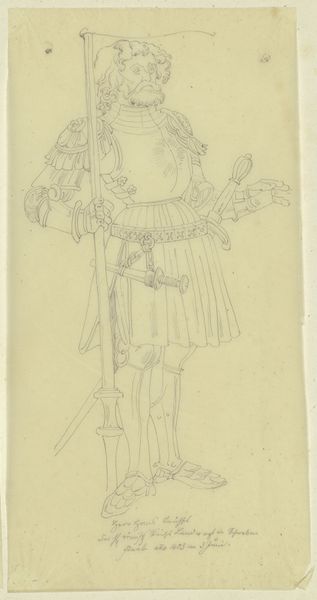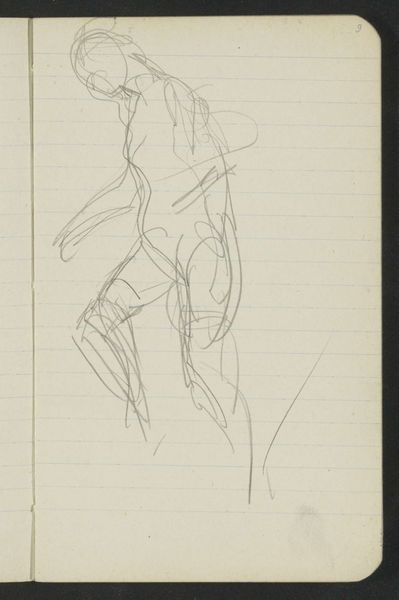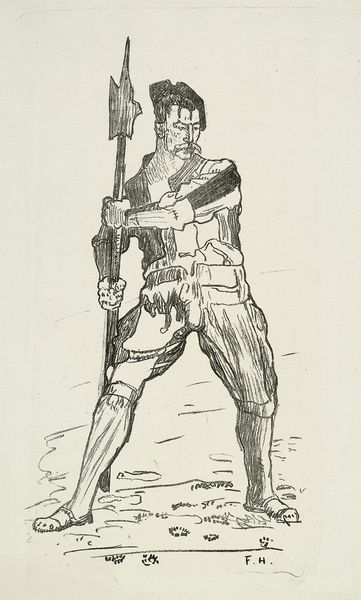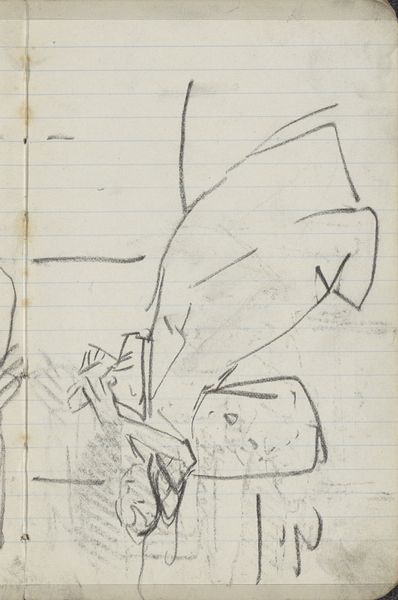
drawing, paper, ink, pen
#
portrait
#
drawing
#
imaginative character sketch
#
pen sketch
#
cartoon sketch
#
figuration
#
paper
#
personal sketchbook
#
ink
#
ink drawing experimentation
#
pen-ink sketch
#
sketchbook drawing
#
pen
#
watercolour illustration
#
history-painting
#
storyboard and sketchbook work
#
sketchbook art
Dimensions: 204 mm (height) x 157 mm (width) (bladmaal)
Curator: Here we have "Draft for a Warrior Costume" by Nicolai Abildgaard, believed to have been created sometime between 1743 and 1809. It’s an ink and pen drawing on paper. Editor: It strikes me as almost comically theatrical. The figure, though clearly intended to be intimidating, comes off more like a stage character with his horned helmet and skull-and-crossbones shield. Curator: That's an interesting read. Abildgaard was deeply involved in the artistic and intellectual circles of his time. His work often reflected his interests in history painting and theatrical design. Considering the period and its fascination with the classics, I'd argue this "warrior" draws heavily from Romantic interpretations of Nordic mythology. Editor: Perhaps, but look at the technique itself – the raw quality of the ink lines, the evident sketching. It suggests an experimentation with the concept of "warrior," playing with the costume to shape this archetype, right down to those seemingly knitted leg coverings. What kind of warrior has leg warmers? Curator: Abildgaard was a central figure in shaping Danish Neoclassicism. He challenged established norms of academic art. He actually served as director of the Academy. So his artistic experimentation was itself an influential position of institutional power. Editor: Right, but the materiality of the work itself undercuts any grandiose intentions. It is on paper, humble pen, seemingly a preliminary study – raising questions about the material limitations on imagining "war." Curator: And the political climate certainly informed this. Abildgaard lived through turbulent times, with the Napoleonic wars reshaping Europe. That historical drama is undeniably intertwined with this apparent costume sketch. Editor: I am also curious about the support. This seems to be just on a common piece of paper; maybe he repurposed this from something. You know, what stories could that paper tell? How can we use that material makeup to tell other stories beyond art and history? Curator: That's a fitting point, considering the layered histories embedded within even a preliminary sketch. It's these material details and historical echoes that shape our understanding. Editor: Agreed. There is so much more than meets the eye when you engage the details of material history in conversation with social history.
Comments
No comments
Be the first to comment and join the conversation on the ultimate creative platform.
